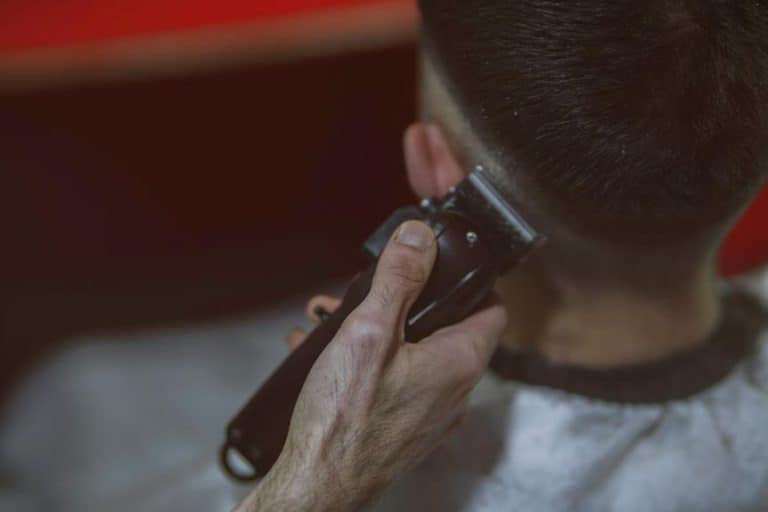Adhd and Cutting Clothes
As I untangle the complexities of ADHD and its connection to cutting clothes, a puzzling behavior emerges that warrants closer examination.
The act of cutting clothing may seem perplexing at first glance, but it serves as a window into deeper underlying issues that demand attention.
Stay tuned to discover the intricate relationship between ADHD and clothes cutting, shedding light on potential interventions and support strategies for individuals grappling with this behavior.
Key Takeaways
- ADHD and clothes cutting often relate to sensory-seeking behaviors and emotional dysregulation.
- Clothes cutting can serve as a coping mechanism for individuals with ADHD.
- Understanding signs of clothes cutting is crucial for early intervention and support.
- Strategies involve providing sensory-friendly options and seeking professional help for effective management.
Understanding the Link Between ADHD and Clothes Cutting

Understanding the connection between ADHD and clothes cutting reveals insightful patterns of behavior in individuals grappling with this complex interaction of sensory needs and emotional regulation. ADHD often coexists with sensory-seeking behaviors, as individuals with this common neurodevelopmental disorder may struggle with regulating their sensory input.
Clothes cutting can serve as a way for individuals with ADHD to address these sensory needs or alleviate feelings of anxiety and stress. Additionally, the impulsivity and emotional dysregulation often seen in ADHD can contribute to behaviors like cutting clothes as a coping mechanism.
Signs and Symptoms of Clothes Cutting in ADHD
Recognizing the signs and symptoms of clothes cutting in individuals with ADHD is important for early intervention and support. People with ADHD may resort to cutting clothes as a coping mechanism to deal with emotional distress or as an expression of frustration. This behavior can be a manifestation of underlying issues related to emotional regulation and sensory processing difficulties commonly seen in ADHD. Individuals engaging in clothes cutting may struggle with managing their emotions and may use this behavior to seek sensory stimulation or alleviate overwhelming feelings.
Signs of clothes cutting in ADHD individuals may include finding damaged clothing, such as cuts or tears, unexplained injuries on hands or fingers, and heightened emotional distress before or after engaging in the behavior. It's imperative to understand that this behavior could indicate a need for professional intervention and support to address the root causes effectively. By recognizing these signs early on and understanding the link between clothes cutting and ADHD, appropriate interventions can be put in place to help individuals manage their emotions and find healthier coping strategies.
Impact of Clothes Cutting on Individuals With ADHD

Cutting clothes can have profound effects on individuals with ADHD, impacting various aspects of their daily lives and well-being. When considering the impact of clothes cutting on individuals with ADHD, it's essential to understand the following key points:
- Emotional Regulation, Self Expression: Clothes cutting may serve as a way for individuals with ADHD to regulate their emotions and express themselves when verbal communication proves challenging.
- Social Consequences, Peer Relationships: This behavior can result in social stigma and difficulties in peer relationships, as others may not understand the underlying reasons behind the action.
- Sensory Seeking, Coping Mechanisms: Cutting clothes may be a form of sensory seeking behavior and a coping mechanism for managing the anxiety and impulsivity often associated with ADHD symptoms.
- Need for Understanding and Support: It's critical to address the root causes of clothes cutting in individuals with ADHD to provide them with the necessary understanding and support for managing this behavior effectively.
Strategies for Managing Clothes Cutting Behavior

To effectively manage clothes cutting behavior in individuals with ADHD, incorporating sensory-friendly clothing options and providing alternative sensory items can help redirect the urge to engage in this behavior. Sensory tools such as chewable alternatives or fidget toys can offer a safe outlet for the need to stim or seek sensory input, reducing the likelihood of destructive behaviors like cutting clothes.
Additionally, offering coping mechanisms and emotional support is essential in addressing the root causes of this behavior. Prevention strategies involve creating a supportive environment that minimizes stressors and triggers, therefore reducing the urge to engage in clothes cutting. Interventions should focus on positive reinforcement techniques to encourage the adoption of healthier coping strategies.
Seeking Professional Help for Clothes Cutting in ADHD

When considering seeking professional help for clothes cutting in ADHD, what key professionals should parents or caregivers consult? It's essential to reach out to professionals who can provide the necessary support and guidance in addressing this behavior effectively. Here are some key professionals to contemplate:
- School Psychologist: A School Psychologist can offer valuable insights into the child's emotional well-being and school interactions, aiding in understanding the underlying issues contributing to clothes cutting behavior.
- Counselor or Child Psychiatrist: These professionals can conduct emotional evaluations, collaborate on treatment plans, and address any behavioral issues that may be linked to ADHD and clothes cutting.
- Treatment Team Collaboration: Working with a team of professionals, including therapists, educators, and medical providers, can guarantee a thorough approach to managing clothes cutting behavior in children with ADHD.
- Safety Educators: Educating both the child and caregivers on safety measures and creating a safe environment is crucial in preventing harm associated with clothes cutting behavior.
Seeking mental health support, addressing behavioral issues, and fostering a collaborative treatment approach are crucial steps in effectively managing clothes cutting behavior in children with ADHD.
Frequently Asked Questions
Can Clothes Cutting Behavior in Individuals With ADHD Be a Sign of a Larger Underlying Issue?
Yes, clothes cutting behavior in individuals with ADHD can signal deeper concerns. Seeking support from self-harm awareness groups can aid in understanding triggers. Behavioral therapy for emotional regulation, alongside creative outlets and sensory distractions, can provide coping mechanisms.
Are There Any Specific Triggers or Stressors That May Lead to Clothes Cutting Behavior in Individuals With Adhd?
When facing triggers or stressors, effective stress management and coping strategies are crucial. Behavioral therapy and mindfulness techniques can help navigate challenges. Self-expression through creative outlets offers a healthy way to process emotions and find relief.
How Can Parents or Caregivers Effectively Communicate With a Child Who Is Engaging in Clothes Cutting Behavior Due to Adhd?
When facing a child's clothes-cutting behavior, parental support is essential. Effective communication, behavior management, and coping strategies help navigate this challenge. Understanding emotions and positive reinforcement foster a supportive environment for the child's well-being.
Is There a Difference in the Prevalence of Clothes Cutting Behavior in Individuals With ADHD Compared to Those Without the Disorder?
When examining prevalence rates of clothes cutting behavior, understanding behavioral patterns and psychological implications is pivotal. Treatment options and coping strategies can vary based on comorbid conditions. Analyzing these factors offers insight into effective intervention strategies for individuals.
Are There Any Alternative Coping Mechanisms or Activities That Can Help Individuals With ADHD Manage the Urge to Cut Clothes?
When dealing with challenging urges, exploring options like art therapy or mindfulness can offer solace. Engaging with fidget toys or exercise provides a healthy outlet. Additionally, cognitive behavioral therapy and self-care practices can aid in managing difficulties effectively.
Conclusion
Just as a tailor carefully stitches together fabric to create a beautiful garment, addressing the link between ADHD and clothes cutting requires patience, understanding, and tailored interventions.
By recognizing the signs, seeking professional guidance, and implementing effective strategies, we can help individuals with ADHD mend the fabric of their emotions and behaviors.
Remember, just like a well-made garment, with the right care and attention, positive change is always possible.







